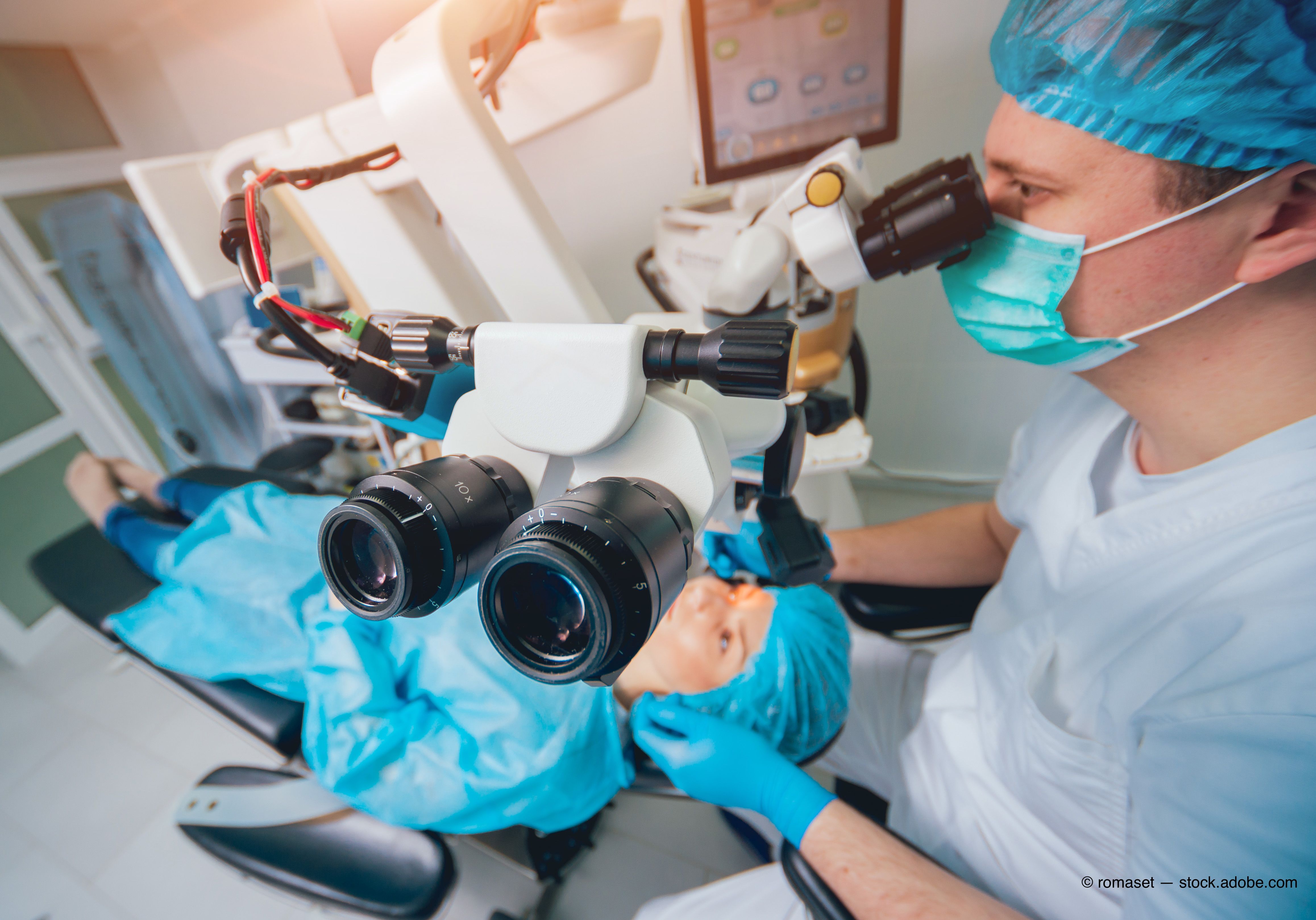Article
DAVS viewing system yields increased sense of situational awareness
Author(s):

3-D digitally assisted vitreoretinal surgery provides marked improvements to the standard microscopic, including augmented reality, safety features, and increased opportunities for education of novice surgeons.
This article was reviewed by John D. Pitcher III, MD
3-D digitally assisted vitreoretinal surgery (DAVS) is an alternative viewing system from the conventional operating microscope that includes some high-tech features: a 3-D high-definition dynamic-range camera, ultra-high-speed low-latency processor, 3-D 4K surgical display, and passive polarized 3-D glasses.
Two such systems are currently commercially available, the Zeiss ARTEVO 800 System and the Alcon NGENUITY System, according to John Pitcher III, MD, a retina surgeon at Eye Associates of New Mexico and assistant clinical professor, University of New Mexico, Albuquerque, NM.
Related: New instruments, devices improve safety and speed in vitreoretinal surgery
The DAVS advantage
DAVS seems to have checked all the boxes on the surgeons’ wish list, with upgrades in visualization, augmented reality, and safety.
DAVS provides visualization that is enhanced in three areas: 42% better depth resolution, 48% more magnification, and 5x extended depth of field, Dr. Pitcher stated.
“Depth of field is defined as the distance between the nearest object that is in focus and the farthest object that is in focus,” he explained. “Enhanced depth of focus facilitates simultaneous in-focus viewing of near and far objects.”
Magnification, which is self-explanatory, in DAVS fills the screen with complete clarity of the desired object. Finally, in standard viewing, in contrast to the focused paraxial rays that are in sharp focus in the center of a view, the nonparaxial rays are blurred; in a DAVS display, “photopic cone vision is on the screen edge to edge,” Dr. Pitcher noted.
Related: Surgeon provides pearls for handling retinal tears
When it comes to augmented reality, the filters in the DAVS system provide enhanced visualization. Surgeons have the ability to selected, for example, a green-free filter that allows visualization of indocyanine green on the macula to more clearly identify the internal limiting membrane.
A second feature, image overlay, is now available in retina surgery and facilitates a view of all data that the surgeon would need intraoperatively at his or her command. Dr. Pitcher explained that the screen provides the infusion pressure in the upper left, vacuum upper right, cut rate lower right, and inversion of the screen center top.
“This technology lets the surgeon know that without looking away from the screen that a higher cut rate, lower vacuum setting is operating and provides better safety for shaving in the peripheral retina,” he said.
Dr. Pitcher demonstrated that during an air/fluid exchange, the image overlay technology shows on the upper left the switch from air to infusion pressure with balanced salt solution and the laser settings with the number of spots delivered in the lower right of the screen.
“This technology allows the surgeon to have all of this information in a heightened sense of situational awareness without looking away from the patient,” Dr. Pitcher emphasized.
Related: Understanding the surgical learning curve
Another feature of augmented reality is the integration of optical coherence tomography (OCT) into surgery.
“This allows, for example, visualization of a full-thickness macular hole on horizontal and vertical B-scans,” Dr. Pitcher explained.
Surgeons also can see the posterior hyaloid face, macular traction, or any epiretinal remnants that remained unpeeled.
“This real-time data allows the surgeon to adjust the surgical technique or steps to provide the best outcome for the patient,” he said.
A key concern for surgeons is safety. Reduced lighting intraoperatively is needed in some settings to enhance visualization and safety. Reduction of the light source to 10% of potential still allowed good results during membrane peeling. Reduced light decreases the possibility of phototoxicity to the retina.
Related: Technology assisting surgeons in capturing spectral-domain OCT
A second safety feature is that surgical efficiency may increase with the use of a head-up display compared with use of the standard microscopic view. The membrane peeling time was shown to decrease significantly with the heads-up display.
As with all new technologies, a learning curve exists and the desired surgical integration of DAVS may be completed over time.
A look into the future
Dr. Pitcher noted that he was impressed by the potential for education of future ophthalmologists provided by the heads-up display of the DAVS and believes that the technology will enhance those educational opportunities.
The heads-up display and processor also video records all cases, which provides more learning opportunities.
Related: 10 effective habits of a cataract surgeon
Ergonomics has always been important in surgery, and 3-D head-up surgery may reduce the surgeon’s physical fatigue by allowing for increased head movement during surgery.
The blinking frequency was significantly higher in 3-D heads-up surgery, which could potentially lead to reduced eye fatigue among surgeons who use this option.
“This may reduce the physical burden of surgery; these injuries can be very challenging for surgeons,” Dr. Pitcher commented.
Currently, he noted, about 12% of surgeons have used a heads-up display and find it helpful, 69% have not yet tried it, and 35% plan on using it in the future.
Read more surgey content here
John D. Pitcher III, MD
E: jdpitcher@eyenm.com
Dr. Pitcher reported receiving research funding from Alcon.
Newsletter
Don’t miss out—get Ophthalmology Times updates on the latest clinical advancements and expert interviews, straight to your inbox.




